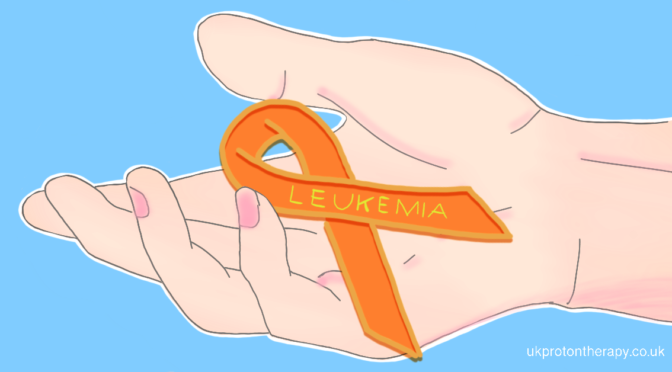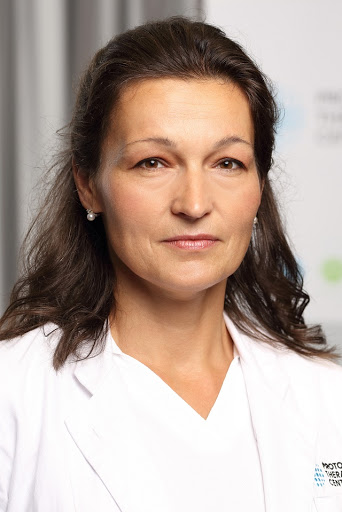Amongst males in the UK, prostate cancer is the 2nd most common cause of cancer death, with around 12,000 deaths in 2017. Prostate cancer accounts for 14% of all cancer deaths in males in the UK. Prostate cancer patients are usually presented with conventional treatment options such as surgery and conventional x-ray radiotherapy. Another option is proton therapy.
This article will explain why proton therapy in Prague is an effective treatment option for many prostate cancer patients.
The Prostate and Prostate Cancer.
The prostate surrounds the urethra and is located beneath the bladder. Cancer begins to develop in the prostate when the cells of the gland begin to grow uncontrollably and form a malignant tumour. Left untreated, prostate cancer can spread to other parts of the body such as the bladder, rectum, bones, and lymph nodes where it can become life threatening.
Modern medicine, however, has made the survival rates of prostate cancer reasonably high.
Common Types of Prostate Cancer
The vast majority of prostate cancers involve adenocarcinomas – these are cancers which develop immediately within the gland cells. It is possible to develop other types of prostate cancer, including:
- Ductal adenocarcinoma – begins in the ducts of the prostate gland
- Transitional cell cancer – begins in the bladder and spreads to the urethra, prostate, and nearby tissues
- Squamous cell cancer – begins in the flat cells of the prostate gland
- Small cell prostate cancer – a type of neuroendocrine cancer made up of round, small cells
Risk Factors and Prevention
Risk factors such as age, ethnicity, and family history have been known to influence the chances of an individual’s chance of developing prostate cancer. Individuals over the age of 50 are more likely to develop prostate cancer.
A family history of prostate cancer can have an impact on your chances of developing cancer. Only 5% of prostate cancer cases are inherited, but up to 20% of cases are familial, meaning common lifestyle factors and shared genes may have had an influence on the development of cancer.
To lower your risk of developing prostate cancer, it’s recommended to eat a low-fat diet and exercise regularly. However, it’s best to monitor your health by receiving routine checkups and prostate screenings (such as the PSA blood test) from your doctor.
Proton Treatment for Prostate Cancer Patients
Also known as proton beam therapy, proton therapy involves the focusing of proton particles into a beam, which is then delivered to the cancer cells in a non-surgical procedure. The positively charged particles can be controlled to stop at the tumour site, enabling the cancerous tissues to be destroyed with high levels of radiation without causing damage to near healthy tissue and vital organs.
Proton therapy is considered more accurate than other types of radiation therapy, and also non-surgical and noninvasive with minimal side effects. What’s more, the treatment requires little to no recovery time, nor does the radiation have an impact on the patient’s energy levels in comparison to other cancer treatment options. Those who choose proton therapy experience fewer complications than those who choose other types of treatment such as surgery or conventional x-ray radiation.
Proton Therapy vs. Conventional Radiation Therapy
Unlike proton therapy, conventional radiation treatments use x-rays to deliver radiation to the cancerous tumour. Unfortunately, these x-rays cause damage not only to the cancerous tissue, but also the surrounding healthy tissue. Proton therapy uses positively charged subatomic particles called protons. Unlike conventional radiation therapy, the clinician can use the proton beam to target the cancer cells in the body specifically, allowing for a more successful and far less damaging procedure.
Proton Therapy Shown to Enhance Quality of Life
According to an American national survey, those who received proton therapy to treat prostate cancer reported experiencing a better quality of life involving urinary and bowel function during and after their proton therapy treatments, in contrast to patients who received x-ray radiation treatments. More than 70% of prostate cancer patients who received proton therapy additionally noted that the treatment had no impact on their quality of life overall.
Proton Therapy Success Stories
It’s one thing to hear about the success rate of proton therapy treatment for those with prostate cancer in comparison to conventional treatments. It’s another thing to hear the success stories straight from those who have survived and continue to survive today. To learn more about the experiences of others who underwent proton therapy in Prague, click here.







 Dr Kateřina Dědečková
Dr Kateřina Dědečková